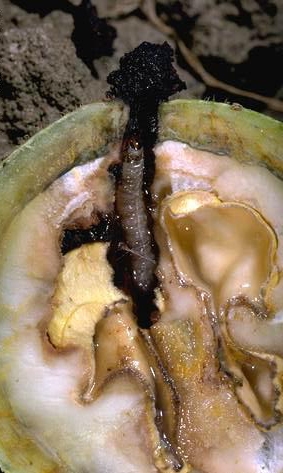The Community Alliance with Family Farmers and UC Cooperative Extension are working with farmers to establish six demonstration sites in walnut orchards that will examine the effectiveness of mating disruption to control two major pests of the crop – codling moth and navel orangeworm.
The three-year research effort is funded with a $1 million award from the California Department of Agriculture Biologically Integrated Farming Systems program.
“The project sites will be in the Sacramento and northern San Joaquin Valleys, but we expect the demonstration to be of interest to walnut farmers across the state,” said Sara Tiffany, CAFF director of ecological farming and the project lead. “Farmers who grow related crops, like almonds and pistachios, will also be able to benefit from the findings.”

“Farmers need alternatives. In this project, we will be studying the effectiveness of alternatives that already exist,” said Jhalendra Rijal, UC Cooperative Extension integrated pest management advisor for San Joaquin, Stanislaus and Merced counties, the lead scientist on the project. The California Walnut Board is also part of the project team.
Six farmers will be recruited to enroll at least 80 acres each in the demonstrations – three farmers in the Sacramento Valley and three in the northern San Joaquin Valley. The entire acreage will be managed following UC IPM guidelines for walnut production, including cover crops, reduced risk pesticide options and biological control.
Forty acres will be treated with commercially available mating disruption products, while the other 40 acres will not. The treatment works by confusing the pests. Codling moth and navel orangeworm moths naturally release pheromones that help them find mates. The female lays eggs in the immature nuts, and when they hatch, the larvae feed on the nuts, rendering them unmarketable. In the treated area, the orchards will be flooded with a synthetic pheromone that makes it much more difficult for male and female pests to hone in on one another.
Besides codling moth and navel orangeworm, the project will systematically look at the effects of cover crops and predatory mite release on pest mite populations, and improvement in other natural enemy populations in walnut orchards.
The results of the IPM practices will be shared widely with growers, pest control advisors and certified crop consultants in articles, meetings and field days.
“Currently the use of mating disruption in walnuts is significantly lower than in almonds,” said Rijal, who is also the associate director for Agricultural IPM with the UC Statewide IPM Program. “We believe when farmers see the results of using mating disruption, along with other sustainable walnut production practices, we will improve the adoption rate.”